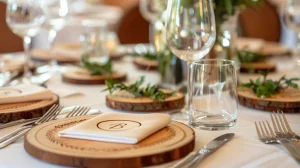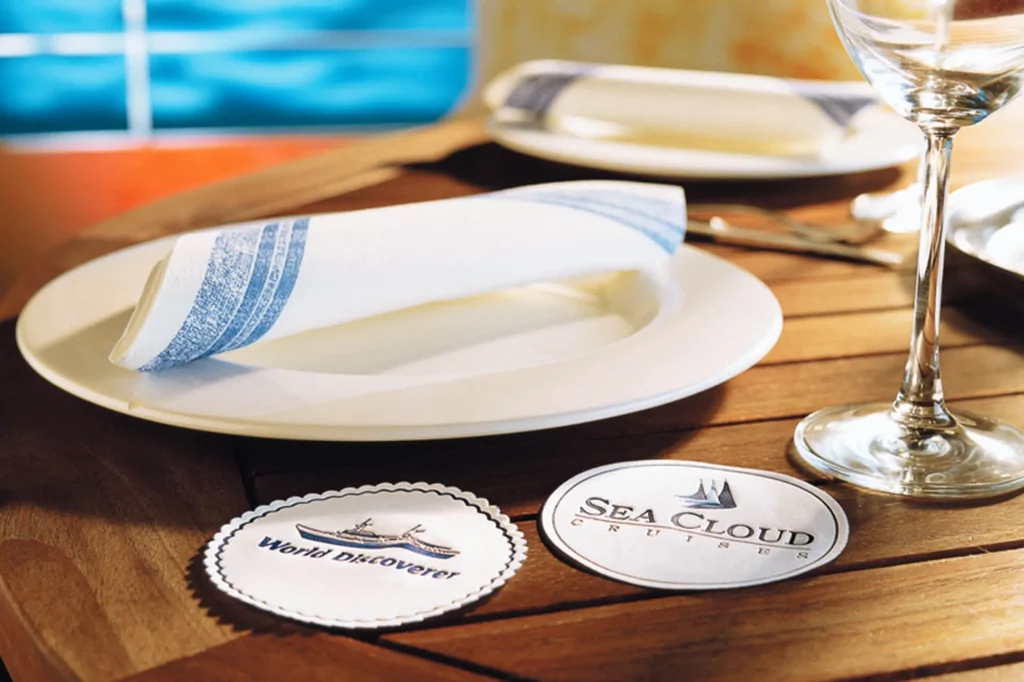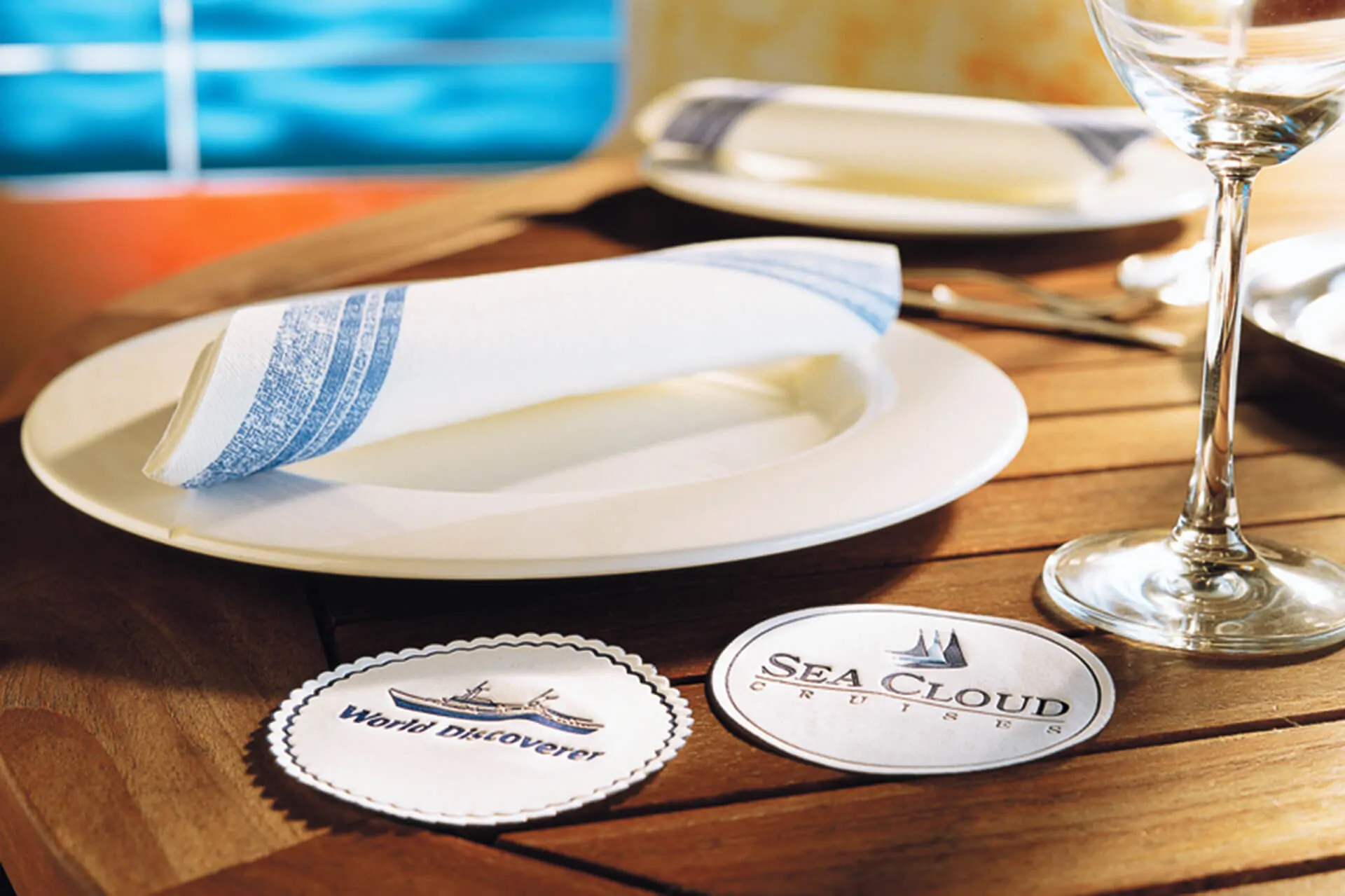The choice of material for drink coasters is critical in ensuring stability and protection for surfaces. Various materials, such as cork, silicone, ceramic, and glass, each offer distinct advantages and drawbacks. Understanding these characteristics is essential for maximizing both functionality and aesthetics. As consumers navigate through these options, the implications of their choices become increasingly apparent. What factors should influence the decision-making process when selecting the ideal coaster material?
Key Takeaways
- Cork coasters provide natural absorbency and a non-slip surface, making them effective for moisture control.
- Silicone coasters are resilient and flexible, offering excellent stain and heat resistance while remaining secure under drinks.
- Ceramic coasters combine aesthetic appeal with good absorbency, though they can chip if not handled carefully.
- Glass coasters deliver a sleek, modern look and are easy to clean, but they lack absorbency and can be slippery.
- Wood coasters offer a classic aesthetic and natural insulation but require maintenance to prevent warping and staining.
Understanding the Need for Effective Drink Coasters
In any household or commercial setting, drink coasters serve an important purpose in protecting surfaces from moisture damage and heat. The necessity for effective drink coasters arises from the potential harm caused by condensation and spills, which can lead to unsightly staining, warping, or long-term degradation of furniture. Selecting the best materials for drink coasters is crucial to mitigate these risks effectively. Options can range from absorbent fabrics to non-porous ceramics and composites, each offering distinct advantages in moisture retention and heat resistance. Furthermore, the aesthetic appeal of coasters can enhance the overall ambiance of a space, fostering a sense of belonging among users. Understanding these functional and aesthetic dimensions is essential for making informed choices about drink coasters.
Top Choices: The Best Materials for Drink Coasters
When evaluating the best materials for drink coasters, one must consider both functionality and durability. Cork emerges as a top contender due to its natural absorbency, providing excellent moisture control while offering a non-slip surface. Similarly, silicone coasters present a resilient option, featuring flexibility and resistance to stains and heat. Ceramic coasters, known for their aesthetic appeal, also excel in absorbency while maintaining structural integrity over time. Glass coasters, though less absorbent, provide a sleek, modern look and are easy to clean, making them suitable for various settings. Finally, wood coasters combine durability with a classic aesthetic, although they require careful maintenance to prevent moisture damage. Each material serves distinct purposes, catering to diverse needs and preferences in a communal environment.

Pros and Cons of Each Material
While each material used for drink coasters offers unique benefits, they also come with specific drawbacks that can influence their suitability for different environments. Cork coasters are absorbent and eco-friendly but can degrade over time with excessive moisture. Ceramic coasters provide excellent heat resistance and aesthetic appeal, yet they are prone to chipping. Silicone coasters are non-slip and durable, though they may lack the elegance some consumers desire. Wood coasters offer a classic look and natural insulation, but they can warp or stain. Finally, plastic coasters are lightweight and inexpensive, yet they often lack durability and can slide easily. Understanding these pros and cons is essential in selecting the best materials for drink coasters that align with both functionality and style preferences.
How to Choose the Right Coaster Material for Your Needs
How does one determine the most suitable coaster material for their specific needs? The selection process begins with an assessment of the environment where the coasters will be used. For high-traffic areas, durable materials like cork or silicone may offer resilience against wear. Conversely, for aesthetic-focused settings, options like marble or wood can enhance visual appeal. Additionally, considerations such as moisture resistance and heat tolerance are vital; ceramic or glass might provide elegance but could be prone to chipping. The lifestyle of the user also plays a role; households with children may prioritize materials that are easy to clean and maintain. Ultimately, understanding the interplay between function and aesthetics is essential in identifying the best materials for drink coasters that suit individual requirements.
Caring for Your Drink Coasters to Ensure Longevity
Selecting the right materials for drink coasters is only part of the equation; proper care is essential for ensuring their longevity and maintaining functionality. Regular maintenance can enhance the durability of coasters, regardless of their composition.
- Clean Regularly: Use a damp cloth to remove spills and stains, preventing material degradation.
- Avoid Extreme Temperatures: Keep coasters away from heat sources to prevent warping or damage, especially in cork or wood varieties.
- Store Properly: When not in use, stack coasters neatly or place them in a designated holder to avoid scratches and wear.
Frequently Asked Questions
Can I Use Drink Coasters Outdoors?
The question of using drink coasters outdoors hinges on material durability. Some coasters, particularly those made from water-resistant materials, can withstand outdoor conditions, while others may deteriorate, compromising their functionality and aesthetic appeal over time.
Do Drink Coaster Materials Affect the Taste of Beverages?
The materials used for drink coasters can subtly influence the taste of beverages. Certain porous materials may absorb flavors, while non-porous options tend to preserve the original taste, highlighting the importance of selecting the best materials for drink coasters.
Are There Eco-Friendly Options for Drink Coasters?
Eco-friendly options for drink coasters include bamboo, cork, and recycled materials. These choices not only reduce environmental impact but also provide effective performance, aligning with consumers’ growing preference for sustainable products in everyday use.
How Thick Should a Drink Coaster Be for Stability?
The ideal thickness for a drink coaster typically ranges from 1/4 to 1/2 inch, ensuring adequate stability. This thickness provides a balance between durability and aesthetic appeal, enhancing user experience and promoting a sense of belonging.
Can I Customize My Drink Coasters With Designs?
Customization of drink coasters with designs is possible and popular. Many materials, like cork or ceramic, allow for printing or engraving, enhancing aesthetic appeal while maintaining functionality, thereby appealing to individuals seeking unique, personalized home accessories.
Conclusion
To sum up, selecting the appropriate material for drink coasters is essential for optimizing both functionality and aesthetic appeal. Cork, silicone, ceramic, and glass each offer distinct advantages and limitations, catering to various environments and preferences. By understanding the unique properties of these materials, consumers can make informed decisions that enhance their beverage experiences. Additionally, proper care and maintenance of the chosen coasters will contribute to their longevity, ensuring effective performance in safeguarding surfaces from moisture and heat.
You May Also Like To Read:







